Related Research Articles

The Battle of Peleliu, codenamed Operation Stalemate II by the United States military, was fought between the U.S. and Japan during the Mariana and Palau Campaign of World War II, from September 15 to November 27, 1944, on the island of Peleliu.
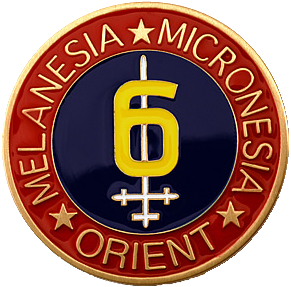
The 6th Marine Division was a United States Marine Corps World War II infantry division formed in September 1944. During the invasion of Okinawa it saw combat at Yae-Take and Sugar Loaf Hill and was awarded a Presidential Unit Citation. The 6th Division had also prepared for the invasion of Japan before the war ended. After the war it served in Tsingtao, China where the division was disbanded on April 1, 1946, being the only Marine division to be formed and disbanded overseas and never set foot in the United States.

The Assault Amphibious Vehicle (AAV)—official designation AAVP-7A1 —is a fully tracked amphibious landing vehicle manufactured by U.S. Combat Systems.

The Amphibious Vehicle, Tracked (LVT) is an amphibious warfare vehicle and amphibious landing craft, introduced by the United States Navy and United States Marine Corps. The United States Army, Canadian Army and British Army used several LVT models during World War II, and referred to those vehicles as "Landing Vehicle, Tracked."

The 1st Marine Division is a Marine infantry division of the United States Marine Corps headquartered at Marine Corps Base Camp Pendleton, California. It is the ground combat element of the I Marine Expeditionary Force.

The 3rd Marine Division is an infantry division of the United States Marine Corps based at Camp Courtney, Marine Corps Base Camp Smedley D. Butler and Okinawa, Japan. It is one of three active duty infantry divisions in the Marine Corps and together with the 1st Marine Aircraft Wing (1stMAW) and the 3rd Marine Logistics Group forms the III Marine Expeditionary Force. The division was first formed during World War II and saw four years of continuous combat in the Vietnam War. Today, elements of the 3rd Marine Division are continuously forward deployed and forward postured to carry out the US Government's mission of a Free and Open Indo-Pacific in conjunction with its sister services.

The 5th Marine Division was a United States Marine Corps ground combat division which was activated on 11 November 1943 at Camp Pendleton, California during World War II. The 5th Division saw its first combat action during the Battle of Iwo Jima in 1945 where it sustained the highest number of casualties of the three Marine divisions of the V Amphibious Corps. The 5th Division was to be part of the planned invasion of the Japan homeland before Japan surrendered. Assault troops of the 5th Division were included in the Presidential Unit Citation awarded to the V Amphibious Corps for extraordinary heroism on Iwo Jima from 19 to 28 February 1945. The 5th Division was deactivated on 5 February 1946.
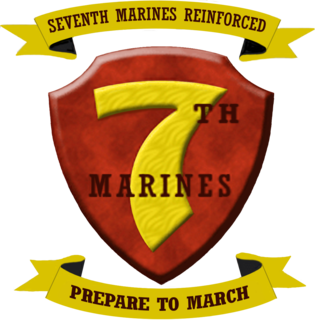
The 7th Marine Regiment is an infantry regiment of the United States Marine Corps based at Marine Corps Air Ground Combat Center Twentynine Palms, California. Nicknamed the "Magnificent Seventh", the regiment falls under the command of the 1st Marine Division and the I Marine Expeditionary Force.

The 1st Battalion, 6th Marines (1/6) is an infantry battalion in the United States Marine Corps based in Camp Lejeune, North Carolina. It consists of approximately 1,100 marines and sailors. They fall under the command of the 6th Marine Regiment, the 2nd Marine Division of the II Marine Expeditionary Force.
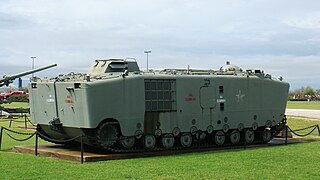
The LVTP-5 is a family of amphibious armored fighting vehicles used by the Philippine Marine Corps and formerly, the United States Marine Corps. It was designed by the BorgWarner company and built by FMC along with a few other companies. It was first accepted into service in 1956. Some 1,124 basic units were produced, plus the specialist variants, and many saw action in the Vietnam War.

3rd Assault Amphibian Battalion is one of two active duty assault amphibian battalions in the United States Marine Corps. The battalion's primary weapon system is the Amphibious Assault Vehicle or AAV. The AAV is a 27.5-ton armored vehicle that carries up to 21 combat-loaded Marines and is armed with the UGWS, which mounts a .50 cal (12.7 mm) M2HB machine gun and a Mk-19 40 mm grenade launcher. The AAV is the only armored vehicle in the U.S. inventory that is fully capable of operations both on land and in the ocean. The battalion is part of the 1st Marine Division and the I Marine Expeditionary Force. The unit is based in Camp Pendleton, California.

4th Assault Amphibian Battalion is a mechanized battalion of the United States Marine Corps reserve. Their primary weapon system is the AAV-P7/A1 Amphibious Assault Vehicle and they are part of the 4th Marine Division of the Marine Forces Reserve. The unit is based out of Tampa, Florida, with subordinate units in Florida, Virginia and Texas.

2nd Assault Amphibian Battalion is a mechanized battalion of the United States Marine Corps. Their primary weapon system is the Amphibious Assault Vehicle. The battalion is a separate battalion within the 2nd Marine Division and the II Marine Expeditionary Force. The unit is based out of the Camp Lejeune, North Carolina

Combat Assault Battalion was a mechanized battalion of the United States Marine Corps and subordinate element of the 3rd Marine Division and the III Marine Expeditionary Force. The unit was last based at Camp Schwab, Okinawa, Japan.
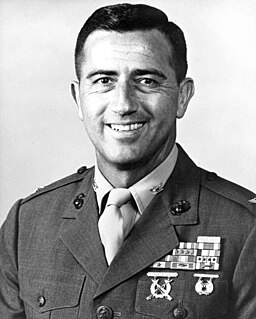
Jay R. Vargas is a retired United States Marine Corps colonel who served in the Vietnam War. He received the Medal of Honor for "conspicuous gallantry and intrepidity at the risk of his life above and beyond the call of duty" in 1968.
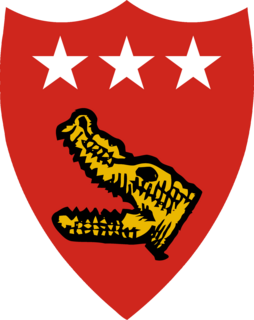
The V Amphibious Corps (VAC) was a formation of the United States Marine Corps which was composed of the 3rd, 4th and 5th Marine Divisions in World War II. The three divisions were the amphibious landing force for the United States Fifth Fleet and were notably involved in the battles for Tarawa, Saipan, and Iwo Jima, during the war. The V Amphibious Corps was commanded by General Holland 'Howlin Mad' Smith followed by General Harry Schmidt.
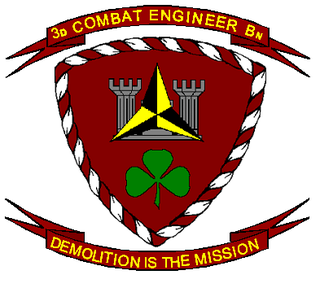
3rd Combat Engineer Battalion was a combat engineer battalion of the United States Marine Corps, most recently activated from 7 October 2007 to 5 August 2014.

The Landing on Emirau was the last of the series of operations that made up Operation Cartwheel, General Douglas MacArthur's strategy for the encirclement of the major Japanese base at Rabaul. A force of nearly 4,000 United States Marines landed on the island of Emirau on 20 March 1944. The island was not occupied by the Japanese and there was no fighting. It was developed into an airbase which formed the final link in the chain of bases surrounding Rabaul. The isolation of Rabaul permitted MacArthur to turn his attention westward and commence his drive along the north coast of New Guinea toward the Philippines.

William Wallace Davies was a decorated officer of the United States Marine Corps with the rank of major general. He is most noted as a pioneer in the development of the Marine Corps Landing craft. He later commanded the Troop Training Unit, Naval Amphibious Base Coronado.

Louis Metzger was a decorated United States Marine Corps officer who attained the rank of lieutenant general. He held combat leadership roles in World War II, Korea, and Vietnam and is credited as one of the primary architects of the Marine Corps' armored vehicle force in World War II. Metzger also formed and commanded the 1st Armored Amphibian Battalion during that conflict at age 27.
References
- ↑ Rottman, Gordon. "U.S. Marine Corps World War II Order of Battle - Ground and Air Units in the Pacific War, 1939 - 1945." Greenwood Press, 2002, p. 300
- ↑ "4th Marines Pass Wrecked LVT-4 Amtrac." The World War II Multimedia Database. http://worldwar2database.com/gallery/wwii1360 (accessed June 13, 2014).